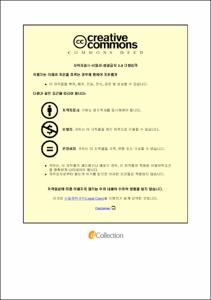수소/공기/희석제 혼합기의 자연점화 특성
- Alternative Title
- Autoignition Characteristics of Hydrogen/Air/Diluent Mixtures
- Abstract
- Hydrogen has been considered as clean energy comparing with fossil fuel and the use of hydrogen in social daily life and economic industry activities will be expected to a huge increase. For hydrogen society, the main systems is fuel cell, which have been actively applied to hydrogen cars and small-scale power generation, and the related facilities is a hydrogen stations for fueling and storage. The by-product gas produced in various chemical processes is also important source of hydrogen gas and should be treated appropriately. However the use of hydrogen energy is limited now because of hydrogen production and safety. The burning velocity of hydrogen mixture is about 7 times faster than hydrocarbon fuels and hydrogen has wide flammability and small minimum ignition energy. Therefore there is a high risk of fire and explosion in all areas of hydrogen manufacturing, transportation, storage, and use.
In this study, the auto-ignition characteristics was investigated numerically for diluted hydrogen mixtures. Auto-ignition temperature was determined on well-stirred reactor as the most important property representing fire and explosion risk in hydrogen combustion. When nitrogen and carbon dioxide were diluted at hydrogen/air mixture, the ignition delay time was increased with increasing dilution ratio on both cases but the ignition of CO2 dilution was more delayed than N2 dilution. It was also confirmed that the lower the initial ignition temperature, the greater the ignition delay time at 950K or higher temperature. Overall autoignition characteristics such as the concentrations of participating species and ignition delay time were mainly affected by initial temperature of the mixture. The critical temperature at which the chain-branching rate becomes of the same order as the chain-breaking rate is defined as crossover temperature and redefined to the temperature at which the total production rate of hydrogen radical is zero. Crossover temperature of CO2 diluted hydrogen mixture is higher than that of N2 dilution. The water vapor addition results in the higher crossover temperature due to high Chaperon efficiency of H2O.
- Issued Date
- 2020
- Awarded Date
- 2020. 8
- Type
- Dissertation
- Publisher
- 부경대학교
- Alternative Author(s)
- Dong Youl Lee
- Affiliation
- 부경대학교 산업대학원
- Department
- 산업대학원 안전공학과
- Advisor
- 이의주
- Table Of Contents
- 제 1 장 서 론 1
1.1 연구 배경 1
1.2 이론적 배경 2
가. 수소/산소 반응기구 3
나. 수소/산소 중간반응 해석법 7
다. 반응 민감도 분석 10
라. 점화지연시간의 정의 11
마. 크로스오버 온도 정의 12
1.3 점화지연시간에 관한 연구동향 13
가. 수소와 공기의 점화지연 연구 15
나. 희석물질별 점화지연시간 연구 17
1.4 연구목적 27
제 2 장 점화지연시간에 관한연구 28
2.1 연구방법 28
가. 수치해석 방법 28
나. 점화지연시간 정의 29
다. 수소/산소 점화지연시간 연구결과 및 검증 32
2.2 연구결과 36
가. 수소/공기/CO2 희석특성 36
(1) 수소/공기/CO2 희석농도, 압력변화에 대한 점화지연특성 36
(2) 수소/공기/CO2 당량비 ø=0.5, ø=1.0, ø=2.0의 점화지연특성 41
나. 수소/공기/N2 희석특성 44
(1) 수소/공기/N2 희석농도, 압력변화에 대한 점화지연특성 44
(2) 수소/공기/N2 당량비 ø=0.5, ø=1.0, ø=2.0의 점화지연특성 46
다. 수소/공기/CO2, 수소/공기/N2 점화지연시간 비교 48
(1) 수소/공기 CO2와 N2희석의 점화지연시간 물리적 특성비교 48
(2) 수소/공기 CO2와 N2희석의 점화지연시간 화학적 특성비교 49
제 3 장 크로스오버 온도 변화 관한연구 52
3.1 연구방법 52
가. 크로스오버 온도 정의 52
나. 수치해석 방법 58
3.2 연구결과 60
가. 수소/공기/CO2 희석농도별 크로스오버 온도 변화 60
나. 수소/공기/N2 희석농도별 크로스오버 온도 변화 64
다. 수소/공기/CO2, 수소/공기/N2 희석농도별 크로스오버 온도 및 점화지연시간 종합비교 68
라. 수소/공기/H2O 희석특성 70
(1) 크로스오버 온도 변화결과 70
(2) 크로스오버 온도 전, 후 영역 점화지연특성 72
제 4 장 결 론 74
참고문헌 76
- Degree
- Master
- Files in This Item:
-
-
Download
 희석제 혼합기의 자연점화 특성.pdf
기타 데이터 / 2.59 MB / Adobe PDF
희석제 혼합기의 자연점화 특성.pdf
기타 데이터 / 2.59 MB / Adobe PDF
-
Items in Repository are protected by copyright, with all rights reserved, unless otherwise indicated.